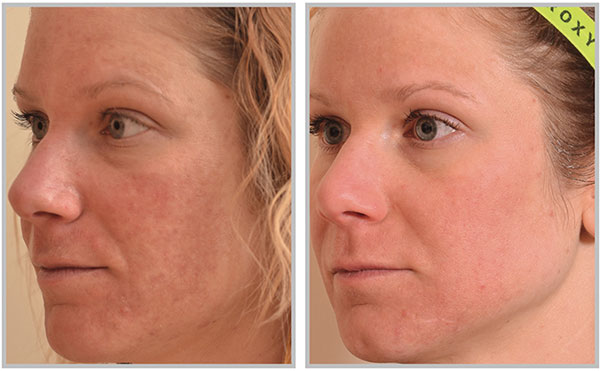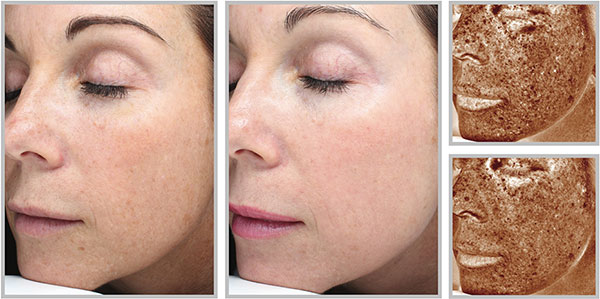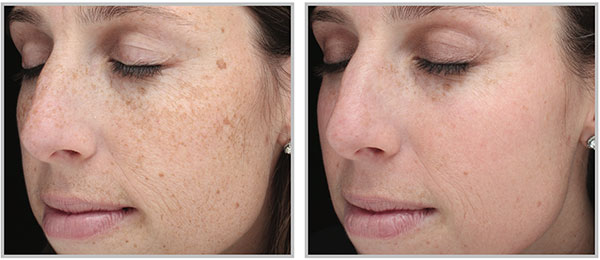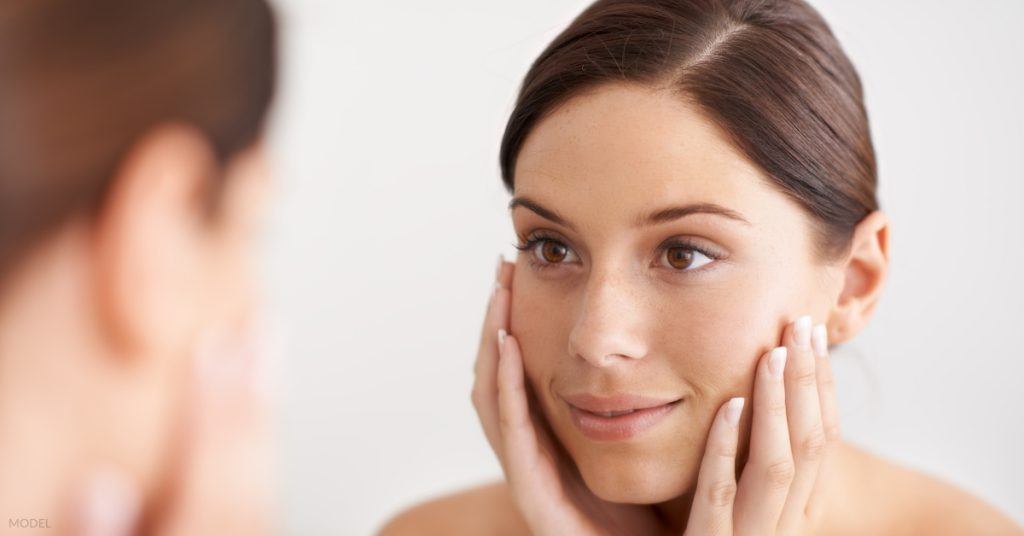The Halo Pro laser is changing the game in skin rejuvenation with its innovative hybrid fractional laser technology. By combining ablative and non-ablative wavelengths, it works on both the skin’s surface and deeper layers to deliver smoother skin texture, even tone, and a more youthful appearance.
As one of our most sought-after laser treatments, the Halo Pro sparks a lot of curiosity. Women and men alike often come to us with questions about what to expect. In this post, we’ll answer some common questions to help you feel informed and confident about your Halo laser treatment.
What Is a Hybrid Laser?
What sets Halo apart from other laser skin rejuvenation treatments is the combination of ablative and non-ablative wavelengths, enabling our providers to customize procedures based on your concerns and goals.
It can treat a variety of skin concerns on the surface, including visible signs of aging and sun damage, hyperpigmentation and other types of discoloration, uneven skin tone, fine lines, and textural issues. At the same time, it heats the tissue below the surface to trigger the body’s natural healing response, stimulating new collagen and elastin production for firmer, smoother, and more resilient skin.
Halo™ Pro Before & After Photos



Keep in mind each patient is unique and your results may vary.
Am I a Good Candidate for Halo Laser?
Halo laser treatments are suitable for a wide range of people looking to improve their skin’s appearance. Good candidates typically include those who:
- Have sun damage, fine lines, wrinkles, or uneven skin tone
- Struggle with enlarged pores or dull skin texture
- Want to address light scarring or discoloration
- Are looking for a treatment that offers significant results with minimal downtime
One of Halo’s key advantages is its versatility. We can customize the treatment to address specific skin concerns, and it’s effective for patients of all skin types and tones.
How Many Treatments Will I Need?
This question highlights the highly customizable nature of the Halo laser. Treatment plans vary from patient to patient based on their goals and the amount of downtime they want. If you want a more aggressive approach to addressing your concerns, 1 or 2 treatment sessions followed by several days of recovery may be the best option. Or, you can choose to have multiple less aggressive treatments and achieve a similar goal over a longer time.
How Often Should I Get Halo?
Some people find that periodic maintenance sessions every 6 to 12 months help preserve their results and improve their skin quality. After your initial treatment, we’ll recommend the best maintenance timeline for your skin’s needs.
How Should I Prepare for a Halo Laser Treatment?
To properly prepare for a Halo treatment and ensure you get the best possible results, follow these guidelines:
Avoid sun exposure: Limiting direct sun exposure for at least 2 weeks before your treatment will minimize the risk of complications.
Skip hair removal: Avoid waxing, tweezing, or using hair removal creams in the treatment area for at least 1 week before your appointment.
Cut back on salt: In the week before your treatment, reduce your intake of salty foods, as they can contribute to increased swelling.
Stay hydrated: Increase your water intake in the weeks before your treatment to support your skin’s healing process.
Take prescribed medications: If you’re prone to cold sores, your provider may prescribe an antiviral medication to prevent outbreaks post-treatment.
Arrive with clean skin: On the day of your treatment, come to your appointment with a clean face, free of makeup and lotions.
What Is the Downtime for Halo Laser?
Halo laser recovery varies depending on the aggressiveness of treatment. Most patients are able to return to normal activities by the second day after their treatment, but a more aggressive treatment plan may require several days of downtime. Our previous blog post offers more information about recovery after laser skin resurfacing, and we outline a general timeline of what to expect below.
What Should I Expect From Halo Laser Recovery?
Immediately after the treatment, your skin will look like it’s been sunburned, with peeling beginning after the first 24 hours. You should avoid wearing makeup until the peeling is finished (usually after about 5 to 7 days.) It’s important to keep your skin protected during the first 24 hours.
Here’s what you can expect after the first day:
Days 2-3
- Slight increase in swelling
- Skin takes on a bronzed appearance
- Tightness and dryness as peeling begins
Days 3-5
- Swelling starts to subside
- Continued peeling, revealing fresh skin underneath
Days 5-7
- Peeling nears completion
- Skin begins to look refreshed and rejuvenated
How Do I Take Care of My Skin After Halo Laser?
To optimize your recovery and results, it’s essential you follow our post-treatment care instructions, which typically include:
- Using over-the-counter pain medication and cold compresses to manage discomfort and swelling
- Washing skin with lukewarm water and a gentle cleanser
- Avoiding direct sun exposure
- Keeping the skin hydrated
- Avoiding picking at peeling skin
After your skin has stopped peeling, be sure to wear high SPF sunscreen to protect it from damaging sun exposure.
When Can I Exfoliate After a Halo Treatment?
It is important to give your skin enough time to heal naturally before exfoliation. This typically takes about a week. Your skin will naturally exfoliate as it peels, revealing the fresh, rejuvenated skin beneath.
Once the peeling process is complete and your skin has fully healed, you can gradually reintroduce gentle exfoliation into your skincare routine. We recommend consulting with us before resuming any exfoliating products or treatments. Our providers can provide personalized guidance based on your skin’s healing progress and sensitivity.
Take the Next Step
Halo laser treatments offer a powerful solution if you want to rejuvenate your skin and address various concerns. It is important to choose a highly qualified provider such as Dermatology Associates of Rochester. You can request a consultation using the online form or call us at (585) 272-0700 to schedule an appointment.


Leave a Reply